Basil is one of the easiest, most beginner-friendly herbs you can grow. However, you should provide the best possible conditions to get the most from it.
Basil grows best in moist, well-drained soils, with access to full sunlight and enough nutrients to maintain essential growth functions. However, it tolerates and adapts to unfavorable environments, often resulting in poor yields but better acclimated subsequent plants.
There are several varieties of Basil, each of which has its quirks. Still, as a general rule, they tend to favor conditions similar to their region of origin and hasten to produce seeds if stressed.
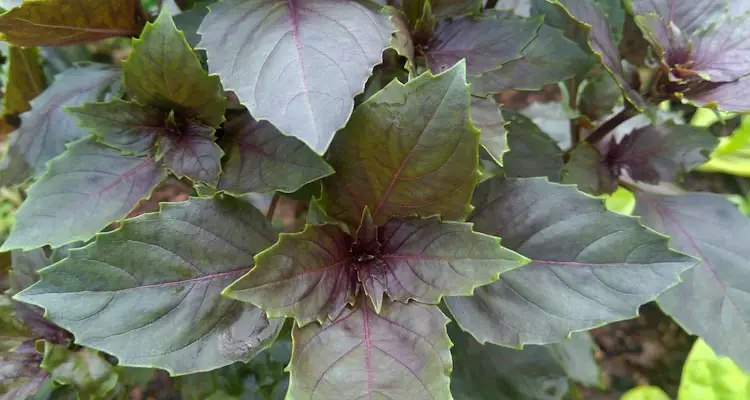
However, if grown properly, they can supply you and your garden with bountiful harvests and benefits for years to come.
This article will explore some of the pointers I’ve gathered over the years to help get the best out of my Basil plants.
Where Does Basil Come From?
Before we can figure out the best growing conditions, we first need to identify the variety we are trying to grow and where it came from.
Basil is believed to be native to tropical regions of Africa and Asia. Due to extensive cultivation, it is grown globally. It has been used for culinary, medicinal, and folkloric purposes for thousands of years, with mummified remnants uncovered in Egyptian tombs and referenced in ancient dialects.
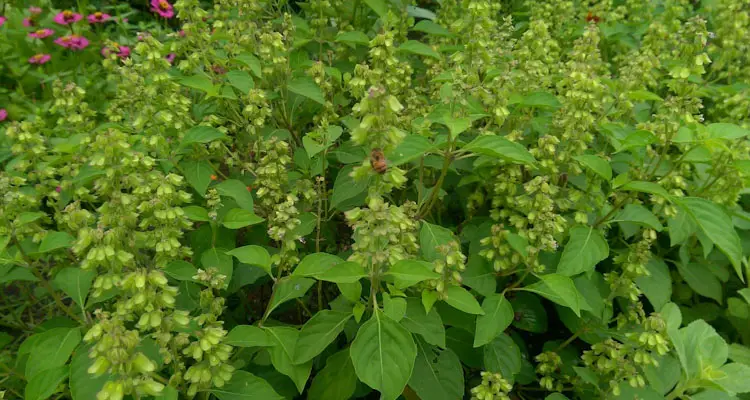
Regardless of the origin, we can conclude that Basil is well-adapted to tropical and sub-tropical regions. It favors well-drained, sunny locations and tends not to do so well in colder climates.
However, several varieties have emerged in certain countries due to interactions with other members of the Lamiaceae plant family, producing strains notably specific to non-traditional regions such as the Mediterranean and North America.
In short, it is best to learn as much about the variety of Basil you intend to grow so that you can prepare accordingly.
How To Grow Basil In 3 Simple Steps
Basil is one of the most tolerant plants for beginners. It is not picky and can grow in less than ideal conditions. It even tolerates periods of neglect and, if stressed, will self-seed to ensure ongoing productivity.
Step 1: Propagate From Cuttings Or Seeds
You can grow Basil from either cuttings or seeds. If you can get a hold of some cuttings, then great. However, it is more convenient to grow from seeds, especially for new gardeners without access to a source plant.
To Grow Basil From Cuttings:
- Cut a piece of branch, about four-leaf nodes long.
- Cut larger leaves in half and remove the leaves from the lower stem node.
- Stick the node into some potting mix.
- Water and place in a cool place.
If successful, you should see signs of new growth within a week. However, allow the roots to develop for another week or two before attempting to remove them from the cell.
To Grow Basil From Seeds.
- Sow two to three seeds per cell into a seedling tray containing moist potting mix.
- Cover lightly, water, and place in a dry area until they germinate.
After germination, place seedlings into a well-lit area, watering only when necessary. You can apply a diluted liquid organic fertilizer after the seedling produces its first true leaves.
Seed Also: How To Make JADAM Liquid Fertilizer
Step 2: Transplant To Garden Or Container
Basil seedlings are typically ready to transplant about two to three weeks after germination, provided they were introduced to direct sunlight from the first day.
- Prepare your planting area, ensuring that the soil is well-drained.
- Dig a hole of similar depth to the seedling container.
- Remove the seedlings from the tray and plant them into the hole.
- Water the area thoroughly.
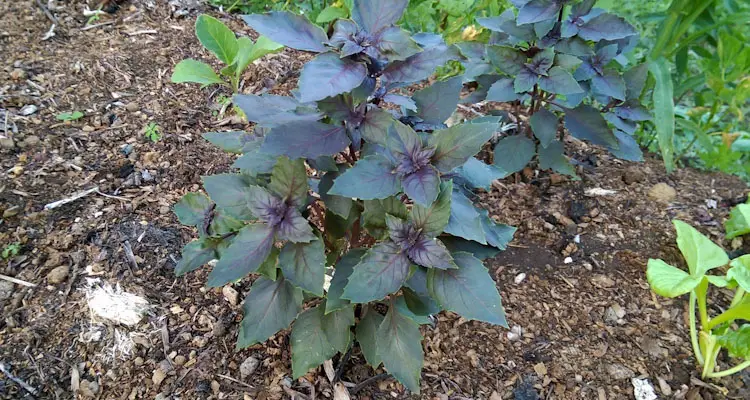
Basil does not require many nutrients to thrive. However, if you choose to plant in containers, you will need to water and fertilize more often than plants in the ground.
Step 3: Prune To Encourage Vegetative Growth
Basil is a short-lived perennial plant that can grow as an annual due to the environment. In less than ideal conditions, Basil is tempted to “go to seed” quickly, resulting in a slight loss in flavor and eventual death of the plant.
You must prune basil plants to encourage them to remain bushy and produce tasty leaves for as long as possible. The plant is pruned whenever the ends of the branches are cut off during harvest.
More often than not, plants are neglected when not needed. As a result, you can schedule a fortnightly pruning to keep on top of things or, at the very least, remove flower buds whenever they form.
4 Types Of Basil You Should Know
Basil is an aromatic herb native from Central Africa to Southeast Asia. It is a perennial plant belonging to the mint family, used extensively for culinary purposes, and has been cultivated globally to that end.
With this in mind, here are four varieties of Basil you should consider growing in your herb garden.
1. Sweet Basil
There are about 40 varieties of Sweet Basil, whose scientific name is Ocimum Basilicum. It is regarded as one of the main Basils from which most types in the west stem. It is the most popular, the “Basil,” often referred to in various recipes.
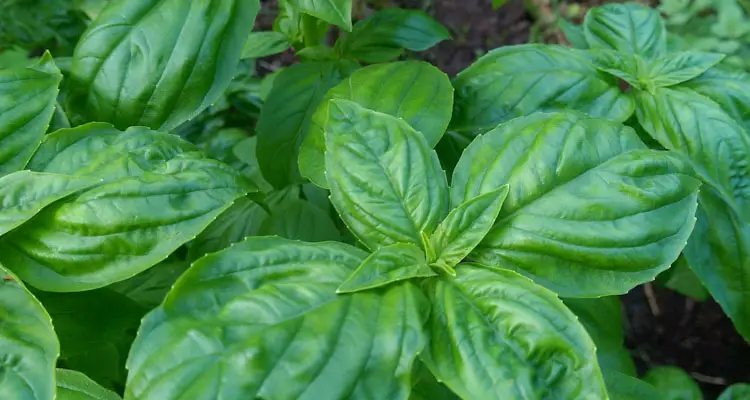
Sweet Basil is easy to grow but requires attention when grown during dry spells. It has a tendency to flower when water is limited and develop black spots if the soil becomes soggy.
2. Genovese Basil
Genovese Basil is one of the most popular Ocimum Basilicum used in Mediterranean cuisine. It is popular in sauces such as pesto or dried and combined with other herbs.
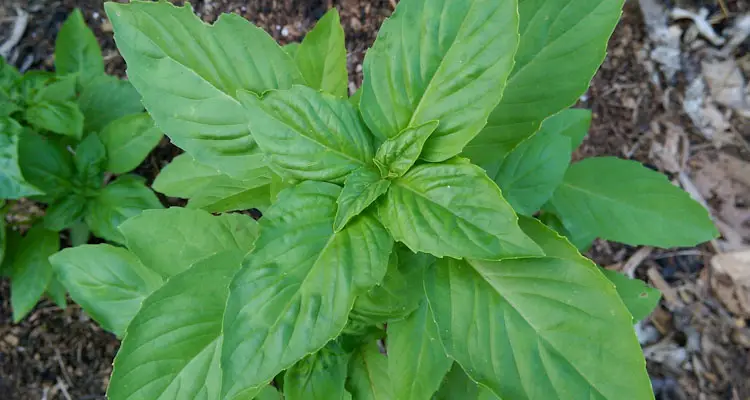
Genovese Basil has an intense flavor, which adds a bit of zest to Green Seasoning blends. It is easy to grow but does not tolerate extreme changes in temperature or rainfall well. If you have clayey soil, you should consider growing Genovese in a medium-sized container instead.
3. Opal Basil (Purple Basil)
Opal Basil is a lesser-known variety, valued mainly for its ornamental appeal, but packs a flavorful punch. It is often used to add color to seasoning blends but loses its vibrant color when cooked.
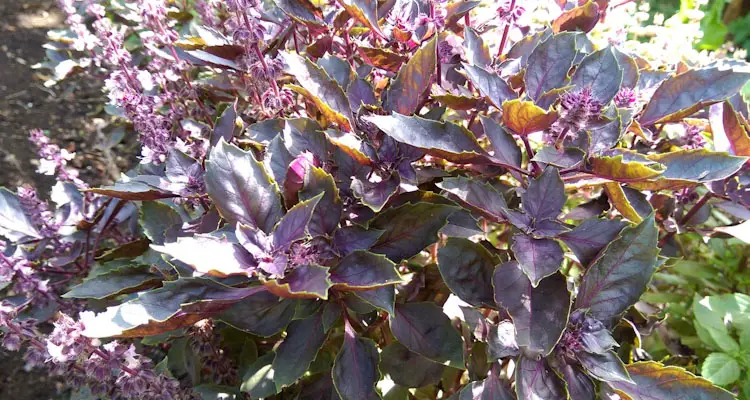
It grows well in containers so long as it receives enough sunlight, which triggers its purple pigmentation. It has a pleasant aroma, with beautiful, long-lasting flowers which attract various beneficial insects.
4. Wild Basil (Poor Man’s Pork)
Wild Basil, known locally as “Poor Man’s Pork,” is a must-have in Caribbean cuisine. It is thought to be a variety of Ocimum Basilicum. However, it closely resembles the African Basil, Ocimum Gratissimum. Like the latter, it is used for both culinary and medicinal purposes.
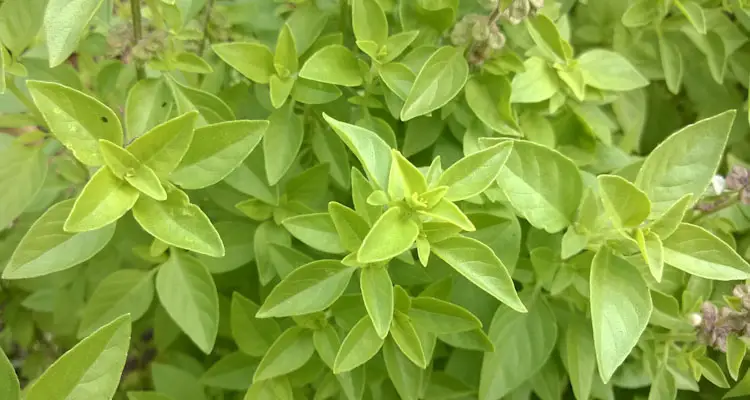
Poor Man’s Pork is well adapted to growing in the tropics and can withstand severe conditions from drought-like to monsoon. It prefers well-drained soil but tolerates soggy soil for extended periods.
What Are Some Companion Plants For Basil?
Basil is a valuable plant to have in the garden. Its intense aroma and beautiful flowers protect plants from certain pests while attracting helpful pollinators. As A result, it is an excellent addition to any vegetable garden. Here is a short list of some plants that grow well with Basil.
1. Vegetables
Basil plants are great companions to vegetables. Its intense aroma repels most harmful insects, and its proximity is believed to enhance the flavor of particular plants. Unfortunately, it does not grow well with watery fruits like cucumbers, whose taste can be altered by the Basil growing nearby.
2. Tomatoes
Basil is reported to Repel common pests such as the tomato Hornworm, which strips away the leaves of the tomato plant. However, you will need to plant quite a bit to benefit from the scent.
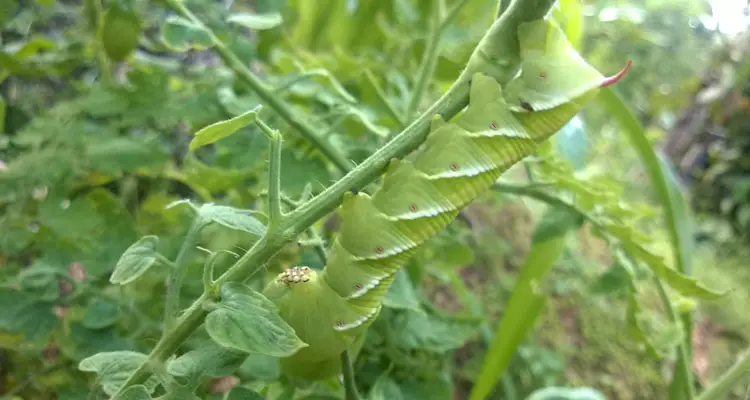
Many believe that Basil also enhances the flavor of the fruit. This matters more to people with discerning palettes since I’ve not tasted much for a difference.
3. Most Herbs
Basil grows well with most aromatic herbs; however, you need to know their watering needs. For example, Basil can tolerate and often requires significantly more water than herbs such as Rosemary.
However, as long as the soil is well-defined or plants are grown in separate containers, you can benefit from the fragrances of the different herbs growing together.
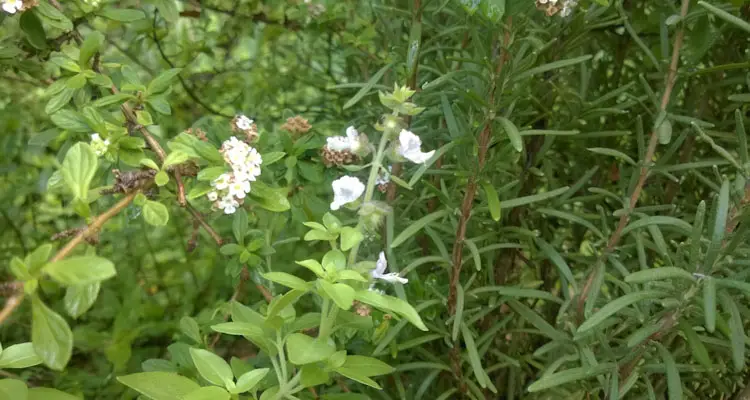
4. Peppers
Basil helps to protect peppers from pests without competing for nutrients. As a result, some people often plant it densely to act as ground cover for taller paper plants.
Usually, our basil plants grow much faster than pepper plants, making it necessary to plant them away from the pepper plants.
5. Root Vegetables
Root crops also benefit from the insect repellent aroma given off by Basil. In most cases, Basil is planted densely, close to root crops, in an attempt to make use of its strong scent, carried by the wind.
However, this is only effective against certain plants since I’ve not seen a marked difference in pest damage to the leaves of root crops close to basil hedges.
How To Harvest Basil
You can start to harvest Basil after it has grown to about 8 inches tall. It is best to start early to encourage compact, vegetative growth.
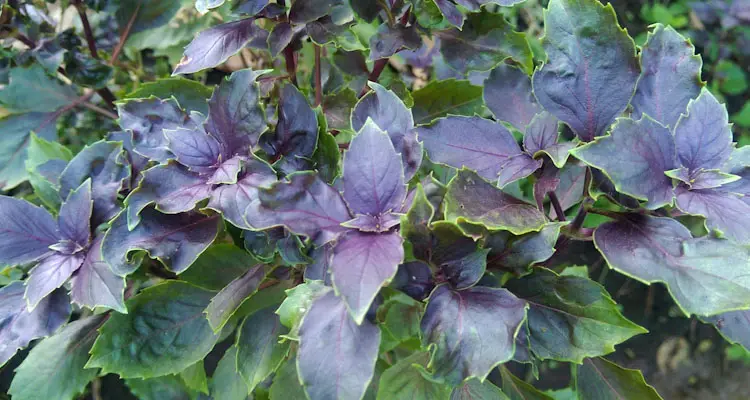
While you can harvest individual leaves by pinching where it meets the branch or stem, it is better to cut off the cluster of leaves at the tip of the branches. It is advised to start doing this as early as possible, leaving two growing nodes.
However, you do not need to be this precise. Remember to snip the tips off the branches, even if you are not harvesting, to discourage flowering.
When Do Basil Start To Flower?
Basil produces flowers at the end of its natural life cycle, influenced by the variety and the environment in which it is grown. Typically, this is in the summer in temperate regions or in warmer parts of the year in tropical areas, resulting in multiple possible flowering periods.
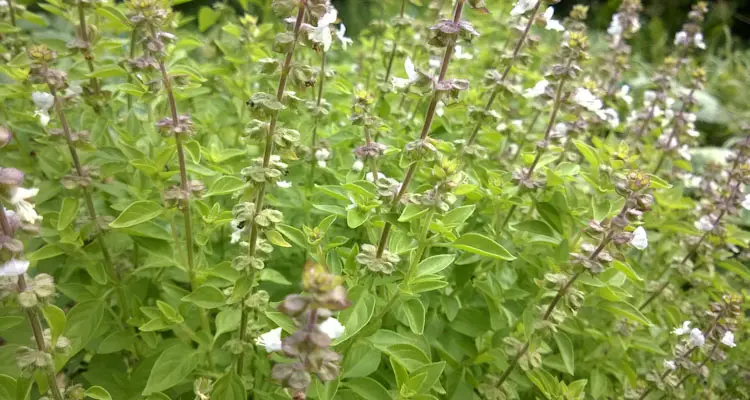
Surprisingly some varieties continue to grow after producing flowers and seeds. However, the plant tends to die back, making room for the self-seeded plants to emerge once conditions are suitable.
You can extend your Basil plant’s lifespan by snipping off the flowering tips. Unfortunately, some plants will persist in producing plants almost daily.
Final Thoughts
Basil is one of the easiest herbs to grow in your garden or containers.
It provides culinary, nutritional, and medicinal benefits to us and numerous other benefits to plants close to which they grow.
However, if we desire a bountiful, continuous harvest, we must pay attention to primary growing conditions and pruning practices.
Related Questions
Why Do Basil Leaves Curl?
Basil leaves curl in response to plant stress, resulting from many environmental factors such as inadequate sunlight, improper watering, pest or diseases, etc. Before administering possible solutions, you will need to examine the plant and surrounding areas to isolate the exact cause.
When Do Basil Leaves Turn Yellow?
The leading cause of yellowing Basil leaves is overwatering, which can lead to fungal diseases or nutrient deficiencies. However, other possibilities include a drop in temperature, infections, insufficient sunlight, and other environmental factors.
References
Britannica. Basil. britannica.com. Accessed June 2022
New World Encyclopedia. Basil. newworldencyclopedia.org. Accessed June 2022
CABI. Ocimum Gratissimum (African Basil). cabi.org. Accessed June 2022
